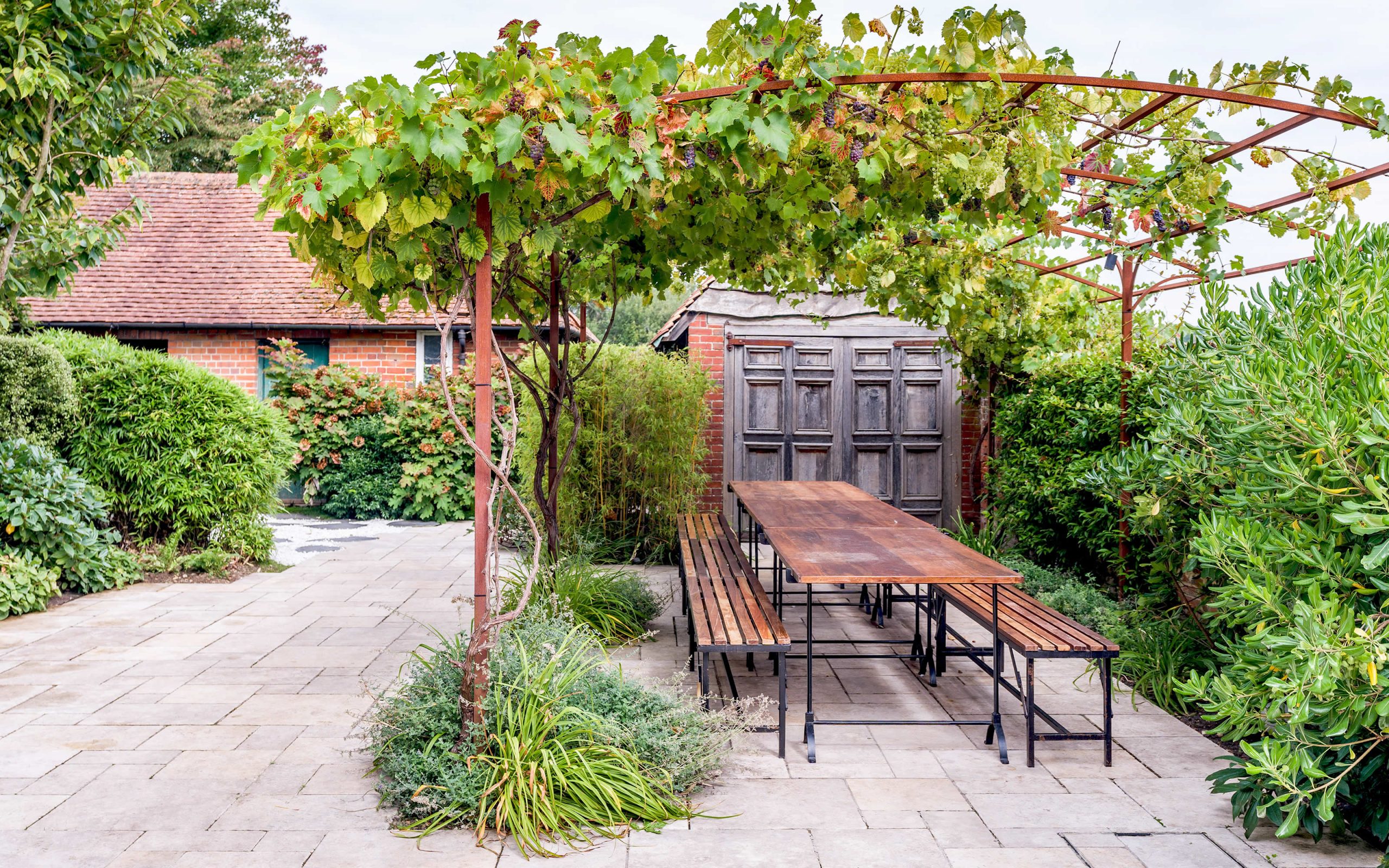Pergolas and other uprights
When you think about garden design you will probably think about all the different dimensions you want us to include in your garden – a veggie patch, a swimming pool, a shed to keep the tools in, a table to have lunch in the shade and one to catch the evening sun but one of the most important dimensions in great garden design is the one that is the most overlooked – the vertical or upright structures that help give the overall design a three dimensional perspective.
Let’s use the term pergola – since most people can easily imagine the sturdy wooden structure built to afford shade via planting, somewhere to sit or simply a link between one outdoor space and another – by which we mean any upright/vertical structure in the garden.
Historically, traditional pergolas fell very much from favour when garden designers moved towards a more naturalistic style of planting and garden design in the 18th and 19th centuries but the design duo that did more to bring pergolas (and other uprights) right back to the heart of great garden design was the design duo of the young architect, Edward Lutyens whose work with the more mature and artistically trained Gertrude Jekyll is still so sought after today. The big change this duo introduced was the option of moving away from the sturdy and heavy Italianate-style oak pergolas to the more contemporary (and more affordable) brick and stone pergolas, exuberantly planted, that quickly became a trademark of the couple’s stylish signature in garden design – a signature which is still today highly sought after by garden enthusiasts. And of course since their heyday in the late 18th and early 19th centuries, the materials now at our disposal to create pergolas and other clever vertical structures have expanded to include vinyl, fiberglass and other metals including copper (if you can afford it) and aluminium.

In terms of design, a thatched cottage on the edge of beechwoods in the Chilterns may seem an obvious candidate for a good old fashioned sturdy wooden pergola but in fact, a structure that is a reflection of the woodland beech tree plantings around the home could be a more elegant and certainly more contemporary option – especially if you choose a copper structure which would beautifully reflect the autumnal colours of that particular part of the countryside when the hedgerows and trees themselves turn a coppery burnished orange/brown.
Most people think of verticals/pergolas as having the sole purpose of offering shade once planted but a much more significant role design-wise is that they lead the eye up and away from the ground thus bringing in the overhead dimension which helps lend a sense of enhanced space in the outdoor area.
And depending on the size of the structure, the materials chosen and the plantings once established the upright design element in a garden can shout grand, grander, sleek, elegant, modest, fun or even outright bonkers. In other words it is another design dimension we can play with to reflect the character of the home, the homeowners and the surrounding landscape or buildings.